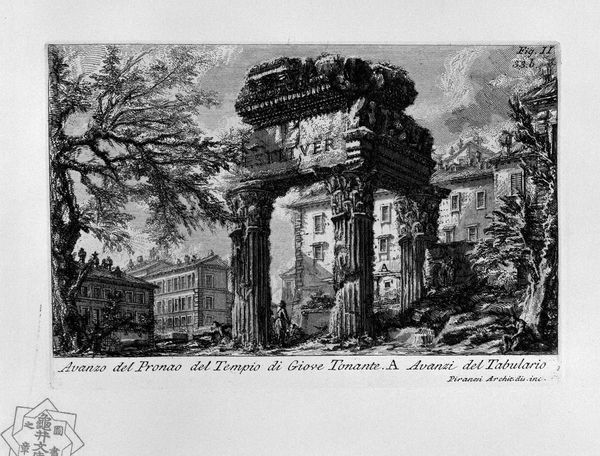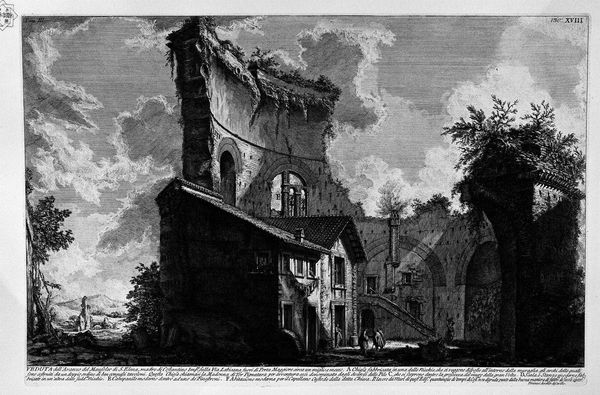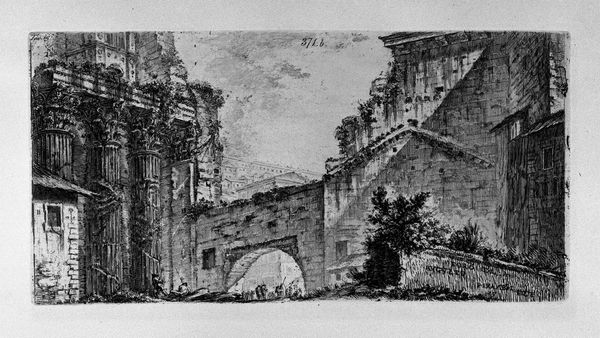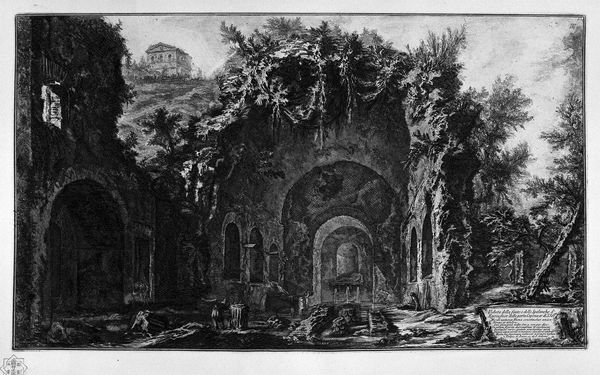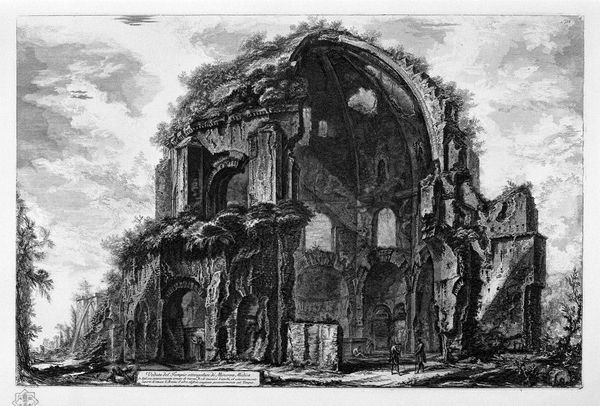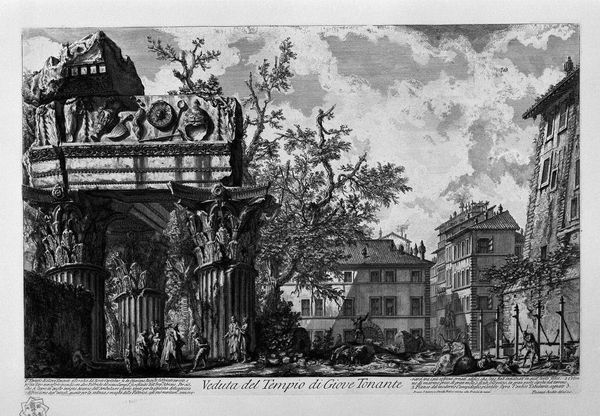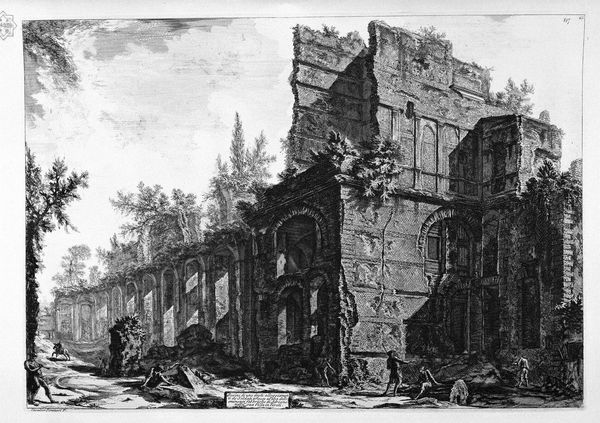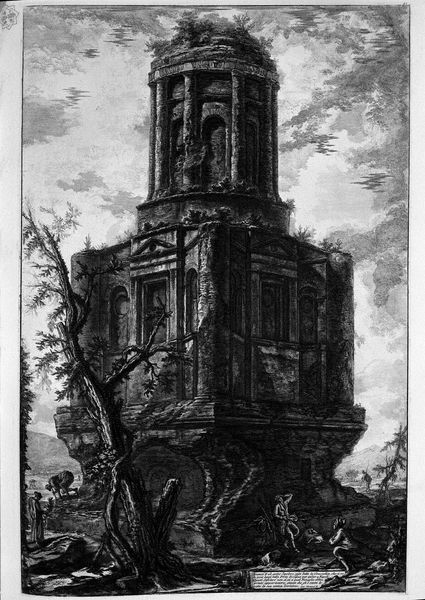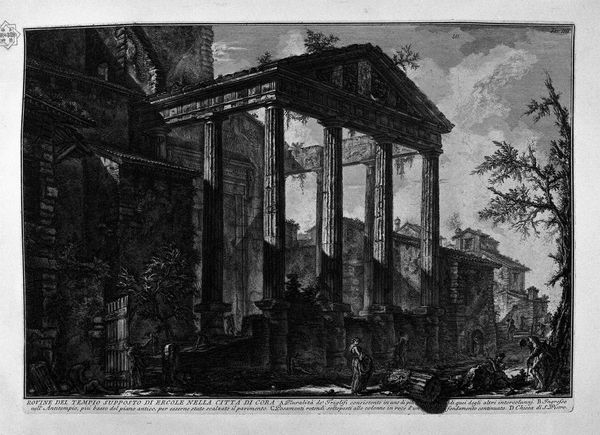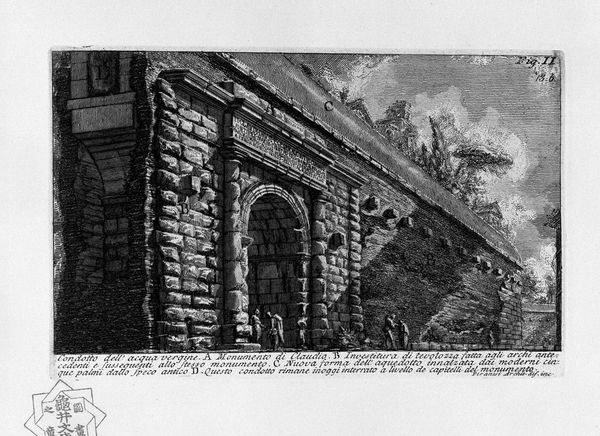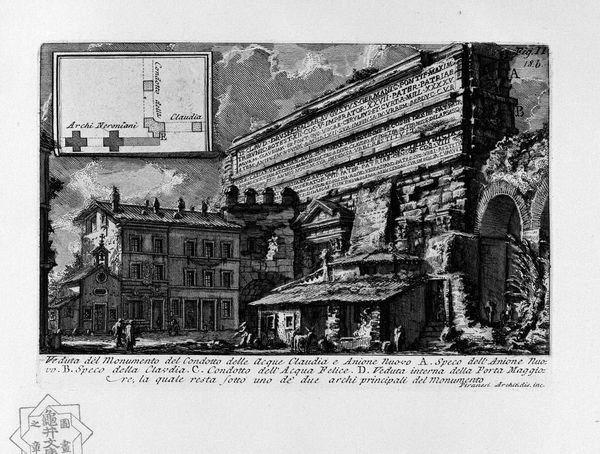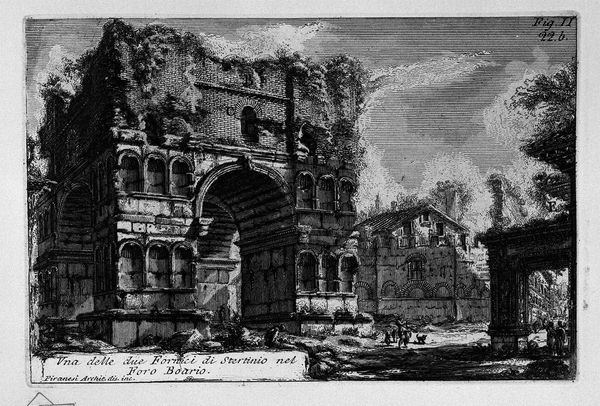
The Roman antiquities, t. 1, Plate X. Aurelian Walls and Amphitheatrum Castrense. 1756
0:00
0:00
drawing, print, etching, ink, engraving, architecture
#
drawing
#
neoclacissism
# print
#
pen sketch
#
etching
#
pencil sketch
#
landscape
#
ink
#
sketch
#
engraving
#
architecture
Copyright: Public domain
Curator: This print by Giovanni Battista Piranesi, dating back to 1756, is part of his series on Roman antiquities. Specifically, this plate depicts the Aurelian Walls and the Amphitheatrum Castrense. The image employs etching and engraving to bring this ancient site to life. Editor: Wow, the first thing that strikes me is the contrast. There's this crumbling grandeur juxtaposed with everyday people strolling around. It’s like a poignant meditation on time. Curator: Precisely! Piranesi was fascinated by the layering of history, the way different eras leave their marks on a single site. We can interpret the work within a framework that investigates postcolonial studies and the appropriation of Classical forms. This wasn't simply documentation. He used architecture to suggest an understanding of how power, especially ancient power, continues to inform culture. Editor: Yeah, I dig it! And there’s something almost theatrical about the way he’s framed the scene. That contrast feels really intense, almost romantic. Ruins being reclaimed by nature and time… Curator: Indeed. He also utilizes these visual devices to examine Rome’s relationship to colonialism and the early days of globalization. As Rome's structures change over the centuries, the work considers what is forgotten, celebrated, or purposefully destroyed. Editor: It’s like Piranesi isn’t just showing us a building, but a feeling, a story etched in stone. A sense of grandeur fades but echoes through time. Curator: Exactly. This image highlights the complexity of the past, suggesting how it intersects and informs not only artistic, but also, cultural dialogues. This print reminds us to look critically at the narratives embedded in architecture and urban spaces. Editor: So, more than just looking at pretty buildings we can find ourselves reflecting on human experiences, layered over centuries. Makes you want to grab a sketchbook and just wander, doesn't it?
Comments
No comments
Be the first to comment and join the conversation on the ultimate creative platform.
